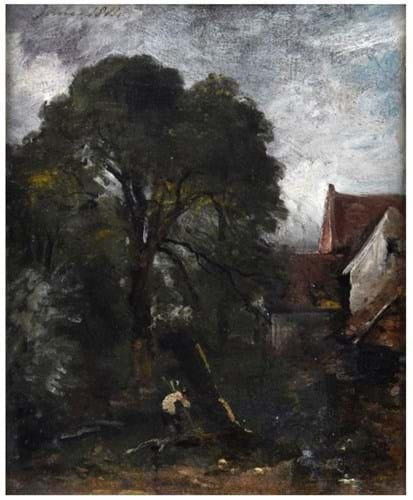The sketch, that is inscribed with the brush ‘June 1814’ shows the back of a brick-built cottage that still stands in the hamlet of Flatford, Suffolk. Willy Lott was a tenant farmer and – spending only four nights away from the house in his entire life – lived there for over 80 years. In Edwardian times the house became known as Willy Lott’s Cottage, but John Constable knew it as Willy Lott’s House, as it has been renamed today.
The whereabouts of this painting, found in a private collection in Guernsey, has been unknown for over 40 years. Published in C. Peacock’s John Constable; The Man and his Work (1965), its location was last recorded in 1979 when it appeared in an Italian publication L’Opera Completa di Constable.
It comes in an early 19th century swept gilded frame inscribed on the slip Willy Lott’s House Flatford.
Research by Constable authority Anne Lyles has traced the provenance of the oil sketch back to the 19th century when it was owned by Constable’s grandson, Hugh Golding Constable (1868-1949). He subsequently sold it to dealers Leggatt Brothers and it almost certainly featured in the famous 1899 exhibition at the Cornhill Gallery, the first to be devoted solely to Constable’s work.
When painting in Suffolk in the early part of his career, it was Constable’s regular practice to sketch in the open air. This oil on canvas laid on panel, 11 ½ x 9 1.2in. (29 x 24cm) relates closely to a pencil sketch of a Suffolk farmhouse in the Royal Albert Memorial Museum, Exeter. It is now clear that both drawing and oil sketch actually show Willy Lott’s House, but from an unusual angle at the back.






